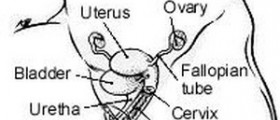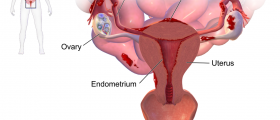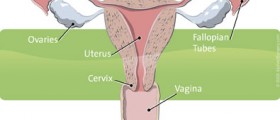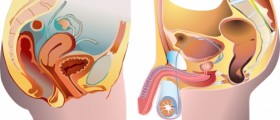
Even though hysterectomy (surgical removal of the uterus) is considered to be the most efficient treatment for endometriosis, it still cannot completely cure the disease. So women suffering from endometriosis can actually continue having some symptoms of the condition after hysterectomy.
Endometriosis Clinical Characteristics
All symptoms and signs of endometriosis are associated with the presence of endometrial cells in different organs in the pelvis. These cells normally react according to the amount of female hormones in the blood. The symptoms become most intensive during menstruation.
Many such women experience severe pelvic pain, nausea, vomiting, dizziness, vertigo and diarrhea before and during periods. Furthermore, periods may be prolonged and a woman may even notice blood clots while menstruating. Long-lasting fatigue, mental problems such as depression or mood swings, severe pain in legs, thighs or back, constipation, repeated urinary tract infections, incontinence and long-lasting anemia may be additional problems caused by endometriosis. Finally, infertility is a major problem some women suffering from this condition eventually have to face with.
What about Hysterectomy?
Hysterectomy is performed only in women who do not want to have children any more and those who have to deal with severe symptoms and signs of endometriosis on a regular basis in spite of being treated.
Hysterectomy can be total, partial (subtotal) and radical. Total hysterectomy includes surgical removal of the uterus and cervix. Partial hysterectomy includes removal of only two-thirds of the uterus while the cervix basically remains intact. And finally, radical hysterectomy includes surgical removal of both the uterus and the cervix as well as the upper part of the vagina and the surrounding tissues.
Facing Endometriosis after Hysterectomy
As it has been mentioned, endometrial cells can spread to different organs in the pelvis, including the ovaries, fallopian tubes and sometimes even peritoneum. So, if the uterus is removed, there are still remnant endometrial cells which can cause symptoms of the disease.
This explains why women who have undergone partial hysterectomy and in whom there are deposits of endometrial cells on the cervix, fallopian tubes or ovaries, may face recurrent symptoms, especially during ovulation. This drives to conclusion that it is better to undergo total hysterectomy when most reproductive organs are surgically removed.
Women who opt for estrogen therapy after hysterectomy may also experience worsening of symptoms of endometriosis.
Because of all the mentioned it is best to consult a well experienced gynecologist regarding the extent of the disease. Also it is good to evaluate benefits of hysterectomy and check whether the procedure will actually eliminate all the extrauterine endometrial cells. Only this way a woman may be sure that surgery will help her overcome uncomfortable symptoms of endometriosis.

















Your thoughts on this
Loading...